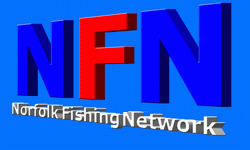| Picture |
Information |
|
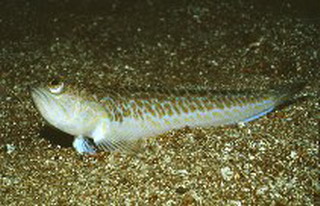
|
Greater Weever (Trachinus draco) -
Body elongated with the length more than 6 times the height. Greenish in upper parts, yellowish white oblique stripes. Small 2-3 spines in front of each eye.
Habitat -
Found on sandy, muddy or gravelly bottoms, from a few metres to about 150m.
In Winter they rest on the bottom, often buried with eyes and tip of first dorsal fin exposed. Considered as the most dangerous of the
European weevers, both for it's poison and for its frequent occurrence
very near to beaches. There are venom glands on the first dorsal fin,
which is totally black, and on the gill cover.
Diet -
Feeding on small invertebrates and fish.
Warning ! This Fish is venomous and if it stings you, you should seek medical attention.
|
|
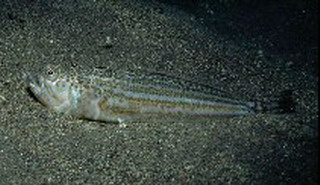
|
Lesser Weever (Echiichthys vipera) -
Body elongated with grey brown on the back and silvery white on the sides. No spines in front of the eyes.
Habitat -
Found on sandy, muddy or gravelly bottoms, from a few metres to about 150m.
In Winter they rest on the bottom, often buried with eyes and tip of first dorsal fin exposed. Considered as the most dangerous of the
European weevers, both for it's poison and for its frequent occurrence
very near to beaches. There are venom glands on the first dorsal fin,
which is totally black, and on the gill cover.
Diet -
Feeding on small invertebrates and fish.
Warning ! This Fish is venomous and if it stings you, you should seek medical attention.
|
|
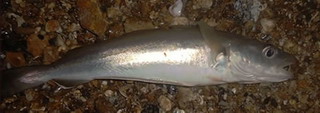
|
Whiting (Merlangius merlangus) -
A member of the Cod Family. Their colour is variable, a yellowish brown, dark blue or green, with yellowish grey sides, and white and silvery on the belly, often with a small dark blotch at the upper base of the pectoral fin.
Habitat -
More commonly found from 30 to 100 m, mainly on mud and gravel bottoms, but also on sand and rock. They migrate to the open sea only after the first year of life.
Diet -
They feed on Shrimps, Crabs, Mollusks, small Fish, Polychaetes and Cephalopods.
|
|

|
Witch (Glyptocephalus cynoglossus)
A right sided flatfish with a small head and mouth.
Habitat -
Lives on muddy grounds at depths of 100m - 400m.
Diet -
Feeds on worms, crustaceans and molluscs.
|
|
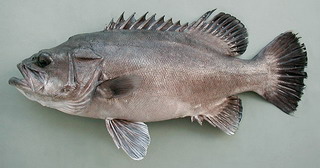
|
Wreckfish (Polyprion americanus) -
Bluish grey above, paler below with a silvery sheen; fins blackish brown. Juveniles have black blotches on head and body. Body tall and compressed with a big mouth and big head, with a rough bony ridge across upper part of the gill cover.
Habitat -
Prefers to inhabit caves and shipwrecks in the 40m - 600m depth range, although Juveniles congregate below floating objects, the fish are Usually solitary.
Diet -
Feeds on large crustaceans, cephalopods and benthic fish.
|
|
